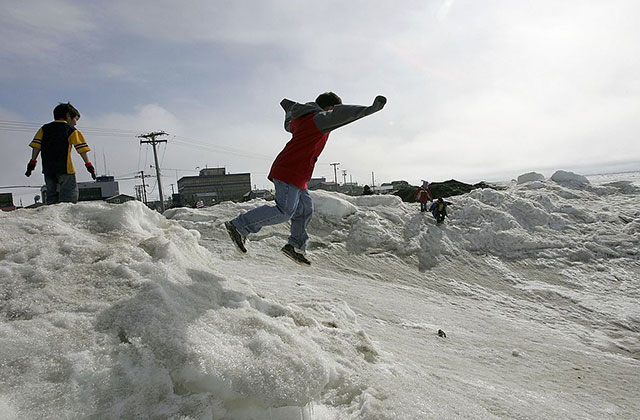The ocean roars outside the doorsteps of village homes off the coast of Alaska. Rising seas and coastal erosion bring the water closer and closer—a reality which the Inupiat of Shaktoolik must face. In August 2016, they had to decide whether to relocate or prepare their current home for what seemed to be inevitable.
Their choice? To stay and defend, as Mayor Eugene Asicksik explained to The New York Times in a piece published today (November 29). The town of 250 is one of at least 31 Alaskan municipalities that climate change will likely erase. Soon. By 2050, experts predict that some villages will be uninhabitable. Shaktoolik is losing an average of 38,000 square feet a year, according to the Times. Its last storm, they report, almost turned the village into an island.
Per the Times:
Big storms on Alaska’s west coast are different from those that threaten Miami or New Orleans. They can carry the force of a Category 1 hurricane, but their diameter is five to 10 times greater, meaning that they affect a larger area and last longer, said Robert E. Jensen, research hydraulic engineer at the Army Corps of Engineers Research and Development Center.
“They’re huge,” he said.
As The New York Times points out, making a decision to stay or move is not simple. Relocating can sometimes take decades—and it’s expensive. All the while, families still need to get on with their lives. That requires open schools, functional water lines and available doctors. Staying requires the city to plan and prepare financially—more than $100 million worth of preparation. “Few governments agencies are willing to invest in maintaining villages that are menaced by erosion and flooding,” the story explains. With the incoming presidential administration, the future seems even more uncertain.
Then, there’s the danger posed to property and human life. Evacuation for a major storm in the village could take five days, according to the Alaska regional director for the National Weather Service, Carven Scott.
“They do not want to move and I have to accept that,” said David Williams, a project engineer for the Corps of Engineers to The Times. “But if they want to live here, they have to have a way to get out of Dodge when getting out is required.”
Read the entire story by The New York Times here.
